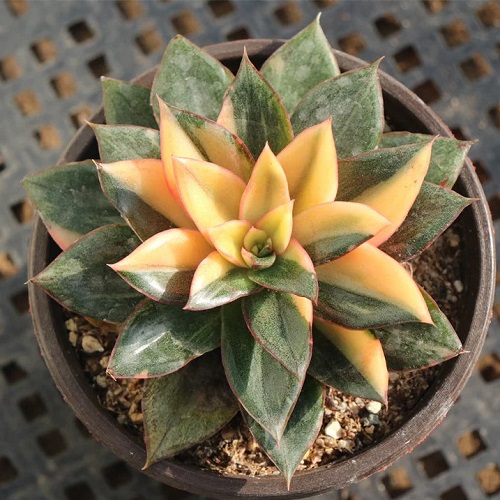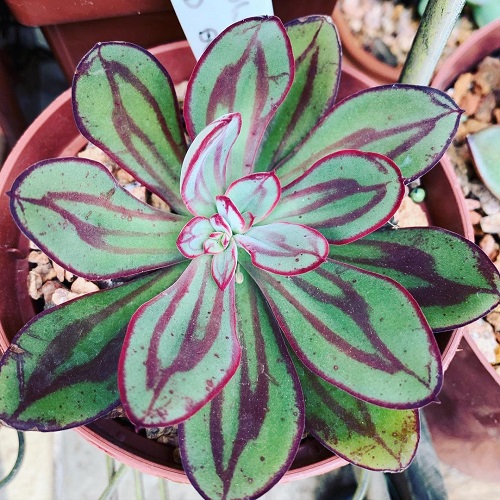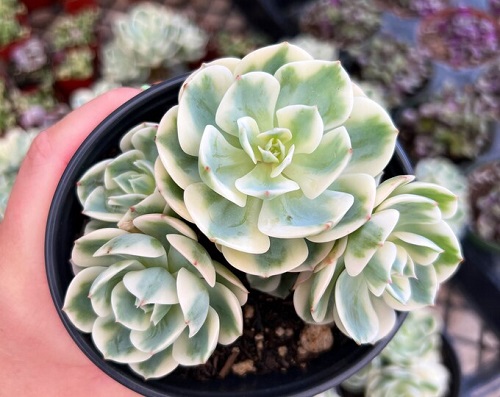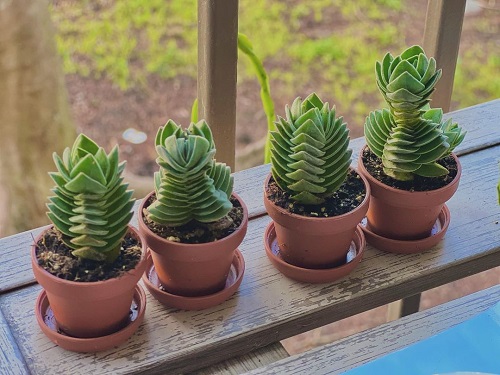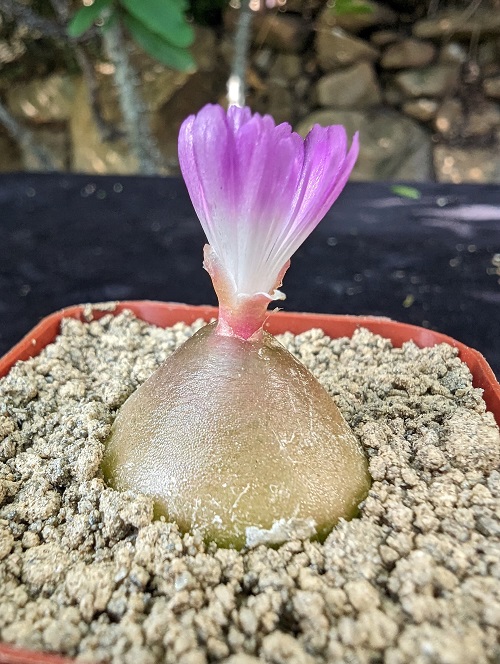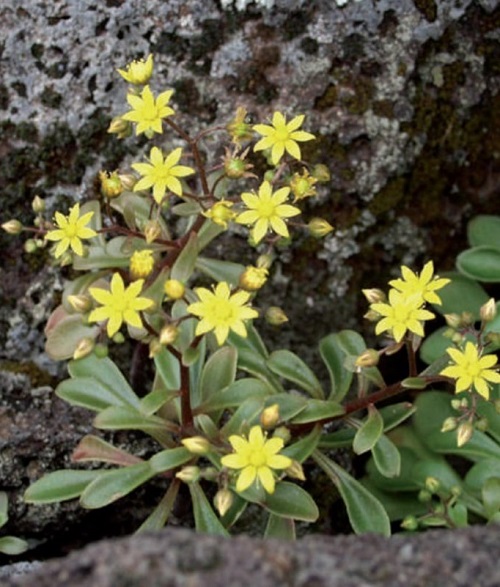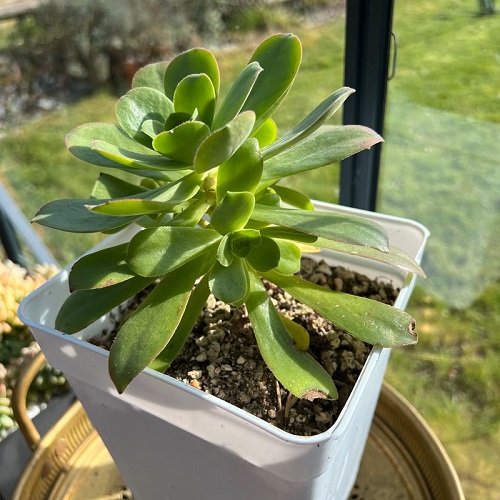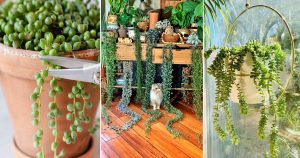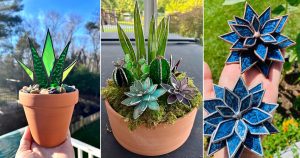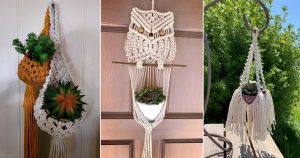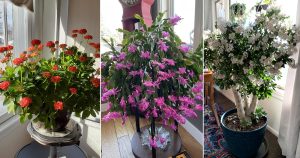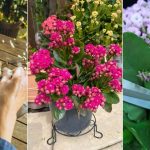Many people out there have fallen in love with Most Rare Succulents In The World, if you’re one of them, meet some special ones here!
There are many types of succulents, but some are really rare and unusual. Note that the term ‘rare succulent’ can be subjective, as rarity can be defined in various ways. We will show you what makes them stand out from the rest! Check out!
Most Rare Succulents In The World
Succulents are termed ‘rare’ because of their unique genetic mutations, limited geographical range, high demand, slow growth rates, endangered status (limited in number), or uncommonness. However, lack of research is also a key factor. Here, we will discuss some of the rare varieties to raise awareness about these incredible plants.
Succulents With Extraordinary Traits Due To Rare Genetic Changes
1. Echeveria ‘Monocerotis Variegata’
Echeveria ‘Monocerotis Variegata’ has rosettes with uneven color variation. Each leaf is a masterpiece with red outlines, some featuring chunky buttercream color on one half while the other half is a deep, rich green. It looks like a watercolor painting!
Indeed, Echeveria ‘Monocerotis Variegata’ is a bi-colored beauty and an ideal ornamental plant!
2. Echeveria nodulosa (Painted Echeveria)
Painted Echeveria is another rare specimen renowned for its striking foliage. Native to Mexico, it grows 1-2 feet tall and 2-3 feet wide. Ideal for containers in sunny gardens and in sandy, dry soil with good drainage. It requires less irrigation!
Attains its attractive appearance due to its spoon-shaped, apple-green rosette leaves with purple-red outlines on the margins and between the leaf surfaces on both sides.
3. Echeveria ‘Lenore Dean Variegata’
Also known as Echeveria ‘Compton Carousel’. Its rosettes grow tightly close to each other, forming a clump with each up to 8 inches in diameter. Considered different from others because of its leaves, which are green and cream-colored.
Plus, older foliage has hints of pink, particularly in the dark months of the year. In summer, it produces red flowers with yellow tips. If you own this plant, keep it safe from water-bound conditions and regularly remove dead leaves. Otherwise, you will see the invasion of pests, especially meal bugs, and provide good sunlight, too!
4. Greenovia aurea ‘ex El Hierro’ (Pink Mountain Rose)
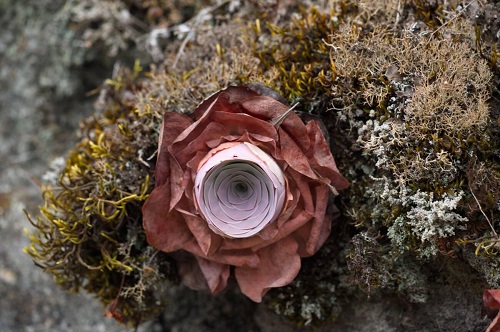
Another hidden treasure from Canary Island! The pink mountain rose is a stunning succulent that looks like an English rose, hence its common name. It has fleshy blue-green foliage and produces cream-colored blooms with a sweet fragrance in spring.
After that, the plant becomes dormant in winter and displays its unique trait by developing dusty pink rosettes. Bright, indirect sunlight plays a crucial role in its healthy growth, providing sufficient warmth and shielding it from intense rays. A cactus potting mix is needed for well-drained soil and to avoid waterlogged conditions.
5. Lenophyllum guttatum ‘Variegata’
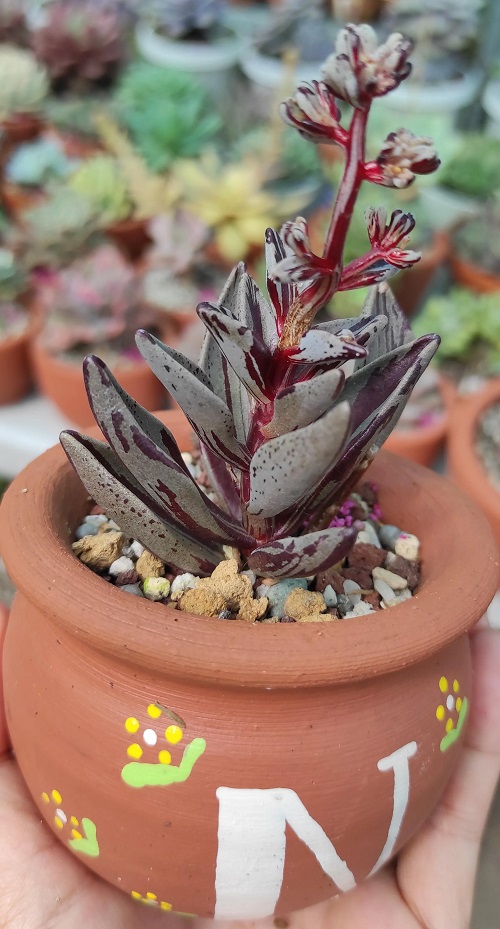
This Lenophyllum guttatum ‘Variegata’ is a true marvel, with gray-green to greyish-pink leaves adorned with red margins. Arranged in opposite directions on non-flowering shoots, it looks exceptionally beautiful, just like a living masterpiece of a skilled artist.
Propagating it is quite easy. Simply take the leaf and put it in the soil, and soon, it will start producing roots. Do not add too much water, and prune only the damaged parts. It is a great addition to rock gardens or containers!
6. Echeveris black prince
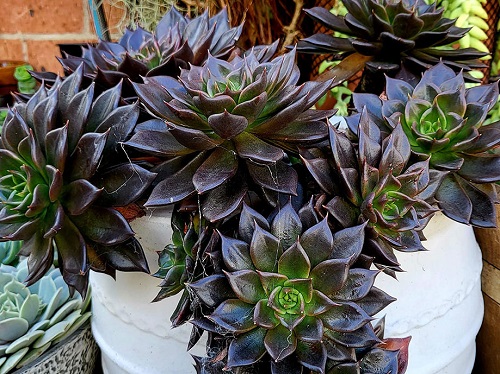
This rare echeveria succulent was first mentioned by Abbey Gardens in his CSSA Journal in 1970. It is a hybrid between Echeveria shaviana and Echeveria affinis.
Echeveria black prince has star-shaped rosettes with pointed leaves in deep burgundy to black. Each rosette attains 5 inches in height and, with maturity, produces offspring. Also, it has large leaf-like bracts and red flowers in fall and winter.
7. Aloe ‘Christmas Carol’
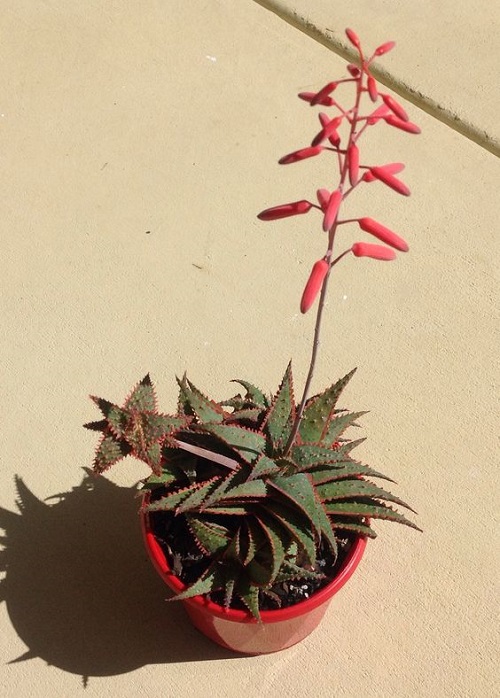
This slow-growing aloe variety features dark green sword-shaped leaves with deep red edges and yellow to deep red crimson bumps covering the surface. When kept in full sun, this plant will appear redder with its contrasting reddish-pink to orange blooms.
Grow it indoors in a spot with good, bright, indirect sunlight and a well-drained soil mix; give regular irrigation. A southwest-facing window will be ideal!
8. Crassula ‘Buddha’s Temple’
Crassula ‘Buddha’s Temple’ is a fascinating plant because of its square columnar rosette, which gives it a zig-zag appearance. Its leaves are closely arranged with folded edges, just like Crassula pyramidalis (its parent). Some also call this arrangement heart-shaped.
Flowers grow in clusters on the top, and red buds appear, which turn into pink-white dense apicals, particularly in spring and summer.
9. Variegated haworthia limifolia
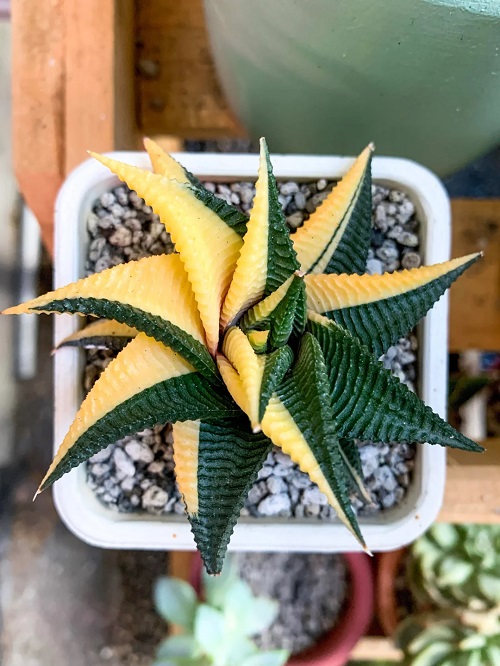
Haworthia limifolia is popular for its irregular color foliage—sometimes, it shows symmetrical patterns as well. Has small rosettes, upto 4 inches in diameter, with dark green and cream colored or yellow markings. Its leaves are triangular or oval shaped, broader from the base, and pointed towards the ends.
This one hates overwatering or standing water. Its slow-growing nature makes it a perfect fit for teacups or miniature baby shoes, with proper drainage in bright indirect light to maintain its variegated beauty.
Succulents With a limited Geographical Range
10. Conophytum
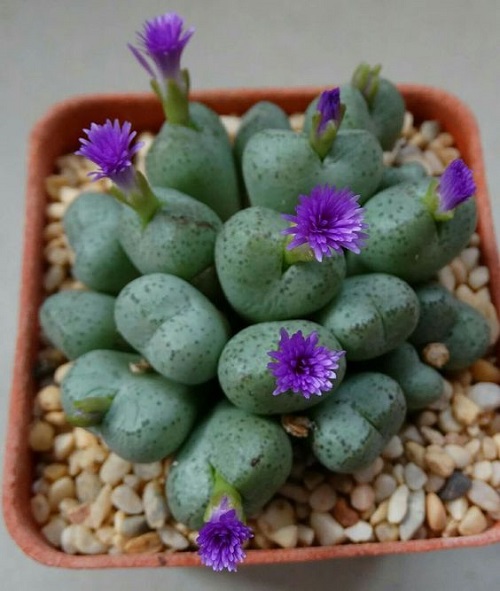
This rare, beautiful succulent species is from the western Northern Cape and northern Western Cape of South Africa. Variety like the Succulent Karoo biome exists particularly in the Fynbos and Desert biomes, and there are other species with very limited geographical ranges and high endemicity.
The generic name ‘Conophytum’ means cone-shaped plants, which refers to the appearance of most species’ fused, cone-like leaves. Usually, they are dwarf varieties, sometimes mistaken for Lithops. You can plant them in bright light containers to avoid sunburn. They grow from fall to winter and go into dormancy from spring to summer!
Most Rare Succulents- High demand
11. Conophytum burgeri
For growing this one, you need to maintain porousness in your growing medium; a commercial soil mix for succulents would be best. In its active growing season, which is fall, it needs deep irrigation. Keep in bright light.
Native to South Africa, Conophytum burgeri is a dwarf plant featuring an onion-shaped body with tiny fissures arising from the middle. It bears purple flowers, which open in mid-afternoon during early fall.
12. Haworthia truncata clump
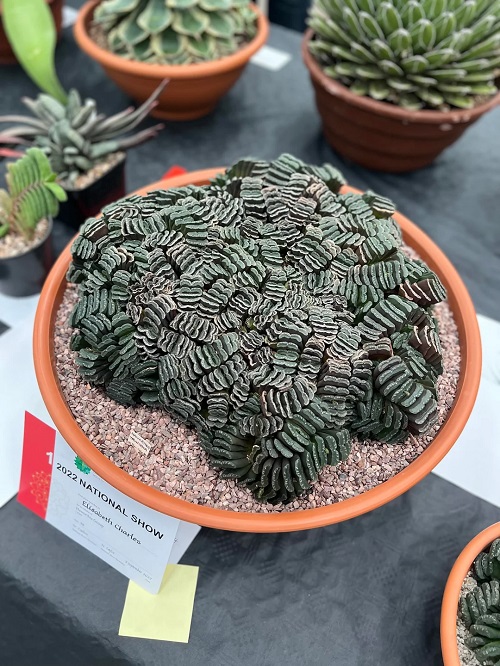
Haworthia truncata clumps grow in open areas under bushes’ shades. It is a unique and desirable species due to its unusual truncate leaf tips, which look roughly cut off at the tops and form a fan-shaped appearance. This makes it the best example of window-leaf adaptation.
However, this means it allows light to penetrate the chlorophyll-rich interior, increasing photosynthesis without water loss. It is one of the best, most rare succulents in the world, and it is worth having in your plant’s collection.
Rarity Due to Uncommonness
13. Bowiea volubilis (Climbing Onion)
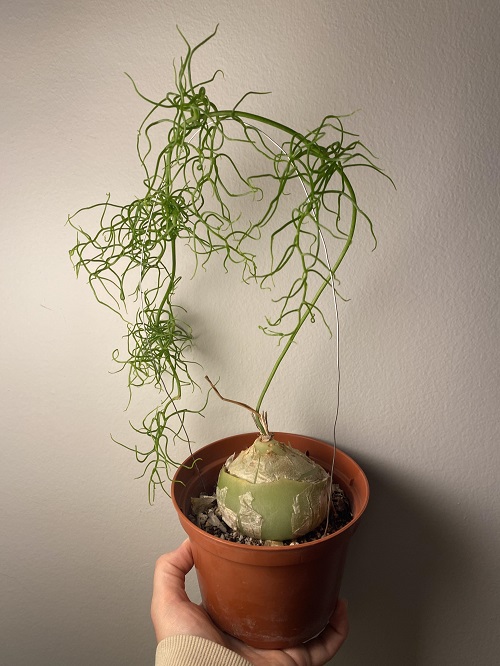
Do not consider it as an edible onion due to its common name! If eaten can lead to Cardiac glycosides. It is a succulent perennial plant from the dry deserts of eastern and southern Africa. Known for its unusual growth habits featuring onion-shaped bulbs and fern-like inflorescence.
However, Bowiea volubilis is not widely grown (uncommon) but can be an attractive specimen when cultivated. It thrives in USDA zones 10a-10b and prefers gritty soil, partial sun to shade, and regular irrigation in the growing season.
Rarity Due to Endangered Status
14. Vahondrandra (Aloe helenae)
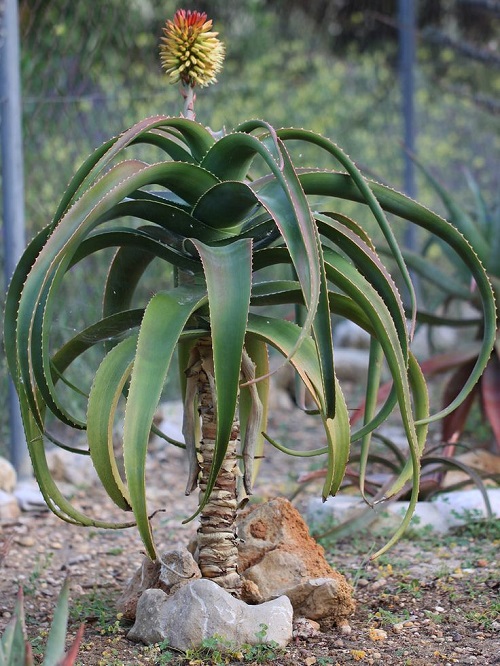
Aloe helenae is endemic to southern Madagascar, particularly in dry deciduous forests. It is estimated to be an endangered species due to overharvesting and mining. Vahondrandra has long, slender, sword-like leaves with serrated edges and produces red or orange blooms.
Popular for its medicinal properties and antiviral and inflammatory effects, making it valuable in traditional medicine.
15. (Graptopetalum amethystinum (Rose) E.Walther) Jewel-leaf Plant
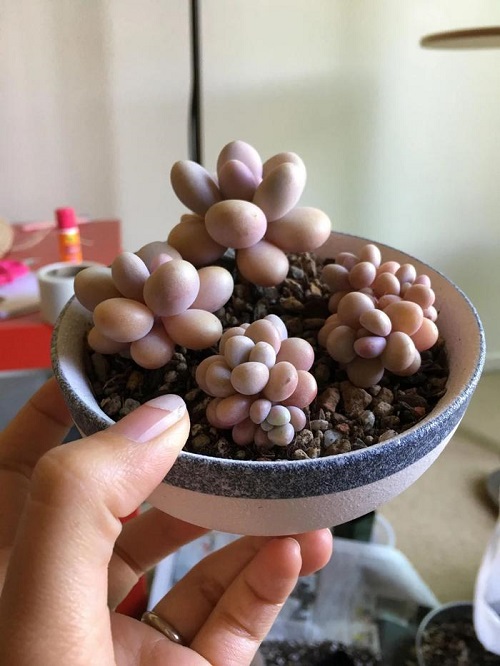
Jewel-leaf succulent grows slowly with erect to lying down or dangling thick, fleshy stems with rosettes that are 6 inches in diameter. The leaves have rounded ends, just like balloons, a powdery coating, and a rosy color that turns grey with age.
Its flowers add a unique charm to its rare beauty. They are star-shaped and have twin-colored petals—the upper lobes are red, and the lower petals are whitish-yellow to pale yellow.
16. Aichryson dumosum
Aichryson dumosum is a true botanical rarity. It lacks a common name and is native to the Canary Islands and Madeira. Grows under the pine forest or in shaded, moist, and humid areas. This one can easily handle a variety of conditions, full sun or shade.
In its native regions, it was damaged by invasive species, drought, or landslides, which is why it is always at risk of being extinct. People cultivate Aichryson dumosum because of its bonsai tree-like structure, bearing fleshy leaves and dozens to hundreds of yellow blooms. You can grow one with the help of cuttings during the spring season.
17. Monanthes wildpretii (Pelotilla de Chinamada)
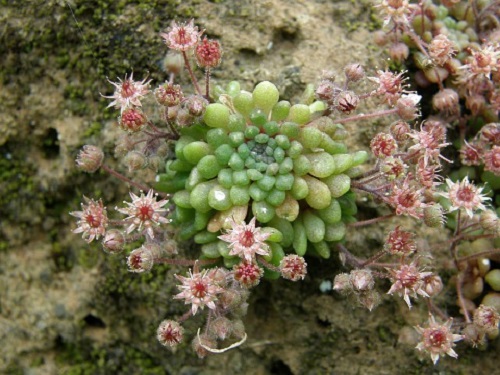
Monanthes wildpretii is a rare succulent that grows in fissures and services in the islands of Spain, particularly on the island of Tenerife in the Canary Islands. In 2011, it was included in the IUCN red list of threatened species because of its natural survival near traveled roads.
As it grows low and close to the ground, and its diminutive population often goes unnoticed, preserving Chinamada’s habitat is crucial. However, there is a concerning lack of research on this plant’s current status, leaving its situation unclear. But its unique beauty makes it a real gem!
18. Aeonium gorgoneum (Salao)
Native to Cape Verde, this succulent shrub has a spoon-shaped rosette with ‘gorgon’ (the end branches of rosettes), giving it a similar look to a monster figure of Greek mythology, Medusa. In 2014, the species’ distinct beauty was in a hard phase, but it is now stable.
If you are in USDA zones 10a to 11b, you can easily propagate this plant with cuttings or seeds during spring. Keep it in full to partial sun in bright indirect light—less exposure will cause legginess. Maintain moisture in the soil and give it good irrigation, but do not overdo it. Let the soil dry out between waterings.
So, You got the list of the most rare succulents in the world! Which one is your favorite? Please, share your thoughts and choices in the comment section below!

